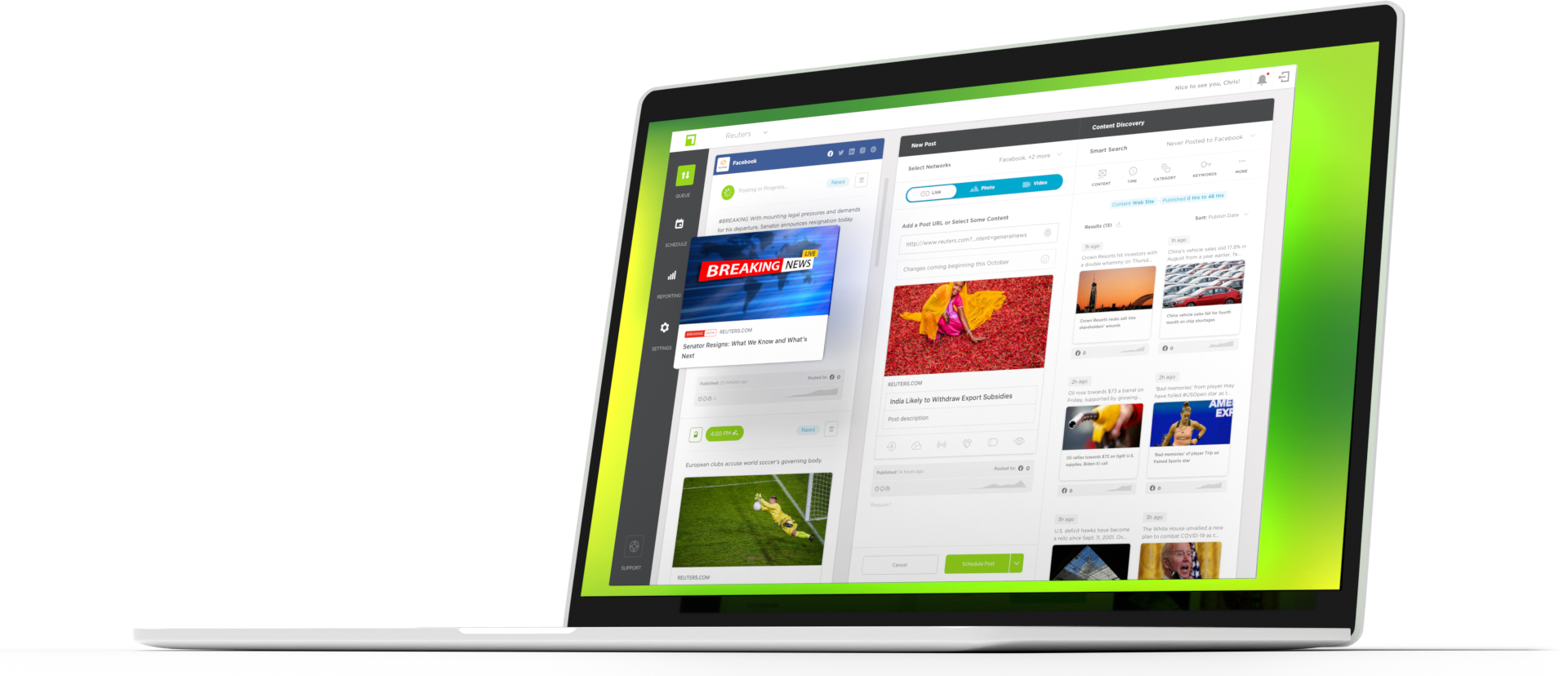In a world of brevity, long-form content can often seem cumbersome. The truth is, though, that quick, engaging videos are often fleeting—the content is forgotten as quickly as it is consumed. To build a meaningful relationship with your audience and create content that truly resonates, you need to dig deeper. So, how do you do long-form content on social platforms well?
Let’s first define long-form content. Good long-form content takes time to thoroughly explore an idea, explain a complex topic, or delve deeply into subject matter that cannot be conveyed in 30 seconds or less. Whether it’s written or visual, this type of content places a larger demand on the consumer’s time, and it can be harder to capture their attention. Well-executed content will command authority in your space, increase your engagement times, and build a deeper relationship with your reader.
Meta
Meta is the most established network of platforms. We’ve all been on these platforms so long that sometimes it can be hard to remember how it started. As is true in almost all forms of art and communication, it starts with a story.
Whether it was long, emotional captions on Instagram or in-depth humor on Facebook, long-form content has found ways to entrench itself in a world of increasing brevity. Over the last several years, it has been all about video. The specs on the platforms have changed frequently, but the turn toward longer-form content is real. Now, in-stream videos can be up to 10 minutes long, providing greater flexibility in content.
Strategically placed long-form content on social platforms can enhance connection to the reader and help them remember your stories. Neil Patel explained this well:
@neilpatel Short-form vs long-form video content: which is best for your brand to generate more revenue? Well, I ran a little experiment to find out, and here’s what I found: After having a group of people watch both short-form and long-form videos, the next day, we asked this group what they recalled. 👉 Most of the group could not recall the information from the short-form content, only the long-form content. With our findings, this is what YOU need to know to use these content types to maximize your revenue: ✅ Short-form content is good for top-of-funnel content, where you want to get attention and views, build a following, and create awareness and buzz around your brand, but it won’t do much for conversions or sales. ✅ Long-form content is better at getting conversion and, ultimately, more revenue since it has more information, value, and context for the audience. We’ve seen an increase in popular creators leaning into long-form content. For them, sacrificing going viral in exchange for conversions and revenue is a fair trade. After all, if one million people watch your 30-second video but don’t buy anything, how did your brand benefit? NOT AT ALL! Do what the big creators are doing – focus on content that drives conversions and gets your brand revenue, and leave going viral to the influencers who only care about views.
♬ original sound – Neil Patel
Threads
Threads is newer, and there is still a lot to be learned. Additionally, new features are regularly rolling out and changing. The principles of long-form content can be applied, though.
- Focus on the story. This platform relies on text more than Facebook and Instagram, and well-crafted Threads can have the ability to reach a lot of people.
- Each Thread can contain 500 characters, but multiple entries can give you a longer platform. The platform makes the Threads easy to follow.
- Treat it like a conversation. Engage, engage engage! Also, speak to your audience like they are there with you.
LinkedIn has so many features for long-form content. The features are robust and tailored to high-quality, relevant content.
- Articles. Long-form posts that allow media embeds, keyword options, links, and more.
- Newsletters. Articles with subscribers. Even better than posting something with proper SEO and hoping for the best, send it directly to your subscribers’ inboxes.
- Long-form video. Just like long-form videos on other platforms, longer videos on LinkedIn have their place. They can build credibility in your space and become resources.
X (formerly Twitter)
A little over a year ago, X launched long-form posts on the platform, allowing articles up to 25,000 characters. This is a significant deviation from the original 140-character posts that made the platform famous, but also reflects the importance of “going deep” sometimes and offering your audience more.
Now, this feature is currently limited to premium subscribers, but it allows brands to reach their audience with deeper content. Publishing an entire article on the platform allows for the brand to reach its audience directly without forcing them to click links.
YouTube
YouTube has always held longer-form video than the other social platforms. However, they have adapted to the prevalence of short-form video as well and have carved out a niche as a powerful search engine as well. Keeping this in mind, long-form content on YouTube can be a long game for publishers. Well structured, high quality content will remain on the platform for years to come, allowing users to find exactly what they’re looking for.
When you’re making long videos for YouTube, make sure that you use all of the features. Write good descriptions, use timestamps to create chapters, and create high-quality thumbnails. Spend some time structuring your video so it is easy to follow.
But I don’t have time!
Don’t worry. That’s where TrueAnthem comes in. Set up a demo today to discover how we can help you reclaim more time, enabling you to create thoughtful, well-researched content that not only adds value for your audience but also solidifies your leadership position in your space.
We’re here to help you with your day-to-day running of your social media life so you can focus on the other stuff!

